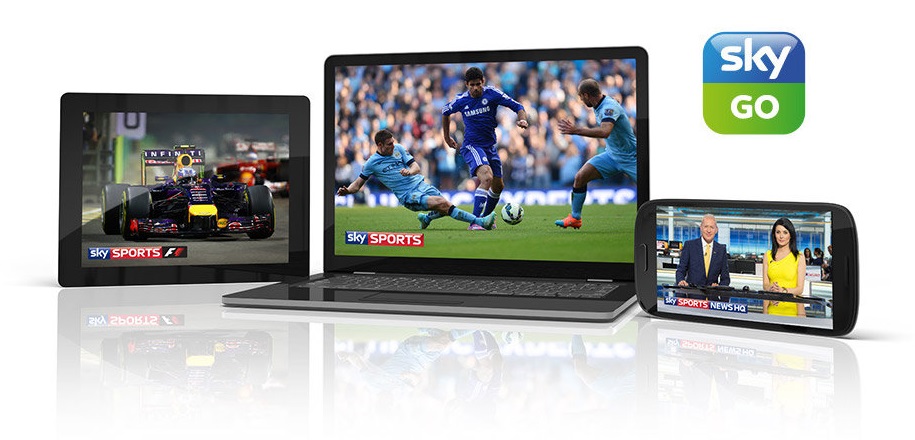By Matt Walters – @matthew_walters – matt.walters@decipher.co.uk
 We’re only three weeks into 2015 but January’s already served up another industry conference, this time IBC’s Content Everywhere MENA in Dubai. Fresh from the HDR (high dynamic range), drones and smart homes of CES, execs from media players both regional (Abu Dhabi Media, Etisalat) and international (YouTube, Yahoo) returned to more familiar and immediate matters, discussing – among other things – the impact new services are having on “traditional” TV and the evolution of Content or TV Everywhere. It’s clear that this, which we describe in more detail below, is and will continue to be one of the year’s biggest talking points – inside and outside the conference room.
We’re only three weeks into 2015 but January’s already served up another industry conference, this time IBC’s Content Everywhere MENA in Dubai. Fresh from the HDR (high dynamic range), drones and smart homes of CES, execs from media players both regional (Abu Dhabi Media, Etisalat) and international (YouTube, Yahoo) returned to more familiar and immediate matters, discussing – among other things – the impact new services are having on “traditional” TV and the evolution of Content or TV Everywhere. It’s clear that this, which we describe in more detail below, is and will continue to be one of the year’s biggest talking points – inside and outside the conference room.
So far, so good. But we have a problem, and sadly it’s one not uncommon for an industry that likes to talk as much as the media industry does. The problem penetrates industry presentations, strategy documents and even the branding of service offerings. Three little words, all of which have subtle but nonetheless important differences, are being used freely and interchangeably – bringing confusion to consumers and industry followers alike where there should simply be precision. The words? Anytime, Anywhere and Everywhere.
We at Decipher love nothing more on these pages than to make the inaccessible accessible, to scrutinise our industry when for one reason or another it’s being obscure, and bring clarity where there is – well – fug. You’d be forgiven for describing us as pedantic, but – as 2015 gets underway – it’s crucial that the industry not only minds its language but is sure of what it’s talking about. True to our mission, let’s test and tease out these three words – Anytime, Anywhere and Everywhere – and set them in their right context. Let’s also try and uncover how this mingling could ever have happened in the first place.
Anytime
 TV Anytime began life not as a service offering but as a set of technical specifications for the delivery of multimedia content to a user’s PVR (personal video recorder). The aim of these specifications, building on the post-2000 evolution in large-capacity digital storage, was to enable audiovisual and other services to provide consumers with a highly personalised TV experience. Set by the TV Anytime Forum (an industry body which replaced DAVIC, the Digital Audiovisual Council, in September 1999), these standards were network-neutral across various content delivery mechanisms, aimed to be interoperable and integrated from one end of the value chain to the other, and sought to put in place security measures to protect the interests of all parties involved. The TV Anytime Forum was wound up in July 2005, following the publication of a document called RFC 4078, which set the standards for tying descriptive content metadata (digital programme information, transmitted in various ways either with or alongside a particular piece of programming) to programme location data.
TV Anytime began life not as a service offering but as a set of technical specifications for the delivery of multimedia content to a user’s PVR (personal video recorder). The aim of these specifications, building on the post-2000 evolution in large-capacity digital storage, was to enable audiovisual and other services to provide consumers with a highly personalised TV experience. Set by the TV Anytime Forum (an industry body which replaced DAVIC, the Digital Audiovisual Council, in September 1999), these standards were network-neutral across various content delivery mechanisms, aimed to be interoperable and integrated from one end of the value chain to the other, and sought to put in place security measures to protect the interests of all parties involved. The TV Anytime Forum was wound up in July 2005, following the publication of a document called RFC 4078, which set the standards for tying descriptive content metadata (digital programme information, transmitted in various ways either with or alongside a particular piece of programming) to programme location data.
The Forum may be dead but long live TV Anytime. Moving from design to implementation, TV Anytime was licensed by a third-party until December 2010, and was then revived under the auspices of the European Broadcasting Union. It has more than 60 member companies from Europe, among them broadcasters (the BBC, Disney), platforms (BskyB) and television manufacturers (Sony, Panasonic, LG).
You’d be forgiven for rubbing your eyes and asking what that all means. What has TV Anytime ever done for us? It’s enabled the industry to provide consumers with the means to search for, find, select and view a wide range of content from the broadcast, VOD, mobile and IPTV worlds – all, of course, ever converging. It’s a technical spec that, in some way or another, has contributed to the EPG, menu or interface your living room TV presents you with. A flow of what the EBU itself describes as “rich metadata” between content providers, advertisers, broadcasters, service providers and consumers has made the viewing experience – across devices, and across the linear (i.e. live) and time-shifted (i.e. VOD) worlds – both simpler and richer. It’s made your menu more attractive, responsive and helped to fire up its recommendation engine.
How could the name of a crucial but understated technical specification come to be so wildly abused by media execs? The clue is in the name. “Anytime”, or “any time”, has become synonymous with consuming VOD or catch-up content – the ability and convenience to “time-shift” viewing and watch content post-, or divorced of, its linear broadcast. Here’s a UK example. In 2007, Sky launched an early forerunner to its now very popular Sky On Demand service called “Sky Anytime”, a “push” VOD service of selected programming where Sky would “drop” selected programming, often the most popular, onto the memories of Sky+ boxes for its customers to enjoy without needing to download it. With the addition of “pull” (i.e. download) elements, it was later rebranded as Sky Anytime+. This wasn’t really an Anytime service, and for that matter it wasn’t really an Anywhere or an Everywhere one either. It was one of the UK’s earliest push and then pull platform VOD services.
Anywhere
 TV Anywhere is a term that, on the face of it, is far more transparent. It’s a service that enables a viewer – across desktop, mobile, tablet, and both inside and outside the home broadband network – the ability to stream and watch live channels.
TV Anywhere is a term that, on the face of it, is far more transparent. It’s a service that enables a viewer – across desktop, mobile, tablet, and both inside and outside the home broadband network – the ability to stream and watch live channels.
Such is the staying power of the term “TV Anywhere” that it is the brand name of the companion streaming service available to subscribers of the Virgin Media TV platform in the UK (pictured right), which actually has elements of TV Everywhere about it (see below), and in the US has lent its name to Dish Network’s Dish Anywhere service, which is actually a supercharged TV Everywhere offering. Dish Anywhere allows Dish subscribers to access streamed live and on-demand content across a multitude of connected devices, whilst also allowing them to transfer recordings from their PVR to their devices to either stream or download (depending on whether they’re planning to be in or out of the home broadband network).
Everywhere offerings branded as Anywhere ones? Surely some mistake?
Everywhere
 And so to one of the industry’s biggest talking points – and challenges – for this and the years to come: TV Everywhere. TV Everywhere is authenticated streaming or authenticated VOD. It is a service offered by, say, a platform such as Sky which allows it subscribers to log in on desktop, mobile, tablet or another connected device and access elements of live and VOD content available as part of their pay TV package. Sky’s Sky Go service (pictured left) is a classic example of this: selected live channels and related VOD content, based on both the rights deals that have been agreed and the size of a subscriber’s pay package, are made available via desktop or mobile/tablet apps on a certain number of devices. Sky Go Extra, Sky’s premium VOD download service, is an extension of this. It is a concept that grew in popularity amongst American networks at the start of the 2010s, and such services are now viewed by some commentators as possessing particular importance for the pay TV platforms in terms of customer retention and reducing churn – making subscribers’ content, be it live or some form of VOD, available across several devices wherever and whenever it’s required. This is just one of the many reasons why “TV Everywhere” may just outjump “programmatic” as the most used phrase of the conference circuit in 2015.
And so to one of the industry’s biggest talking points – and challenges – for this and the years to come: TV Everywhere. TV Everywhere is authenticated streaming or authenticated VOD. It is a service offered by, say, a platform such as Sky which allows it subscribers to log in on desktop, mobile, tablet or another connected device and access elements of live and VOD content available as part of their pay TV package. Sky’s Sky Go service (pictured left) is a classic example of this: selected live channels and related VOD content, based on both the rights deals that have been agreed and the size of a subscriber’s pay package, are made available via desktop or mobile/tablet apps on a certain number of devices. Sky Go Extra, Sky’s premium VOD download service, is an extension of this. It is a concept that grew in popularity amongst American networks at the start of the 2010s, and such services are now viewed by some commentators as possessing particular importance for the pay TV platforms in terms of customer retention and reducing churn – making subscribers’ content, be it live or some form of VOD, available across several devices wherever and whenever it’s required. This is just one of the many reasons why “TV Everywhere” may just outjump “programmatic” as the most used phrase of the conference circuit in 2015.
Postscript
Writing this piece has been not only a great deal of fun but in many ways therapeutic, as I hope the reading experience has been for you. If nothing else, readers from the United States will never look at the promotion of DIRECTV’s latest TV Everywhere offering, DIRECTV Everywhere, in the same way again: its own product page peppers the words “anytime” and “anywhere” liberally across the page. Or Comcast’s “Showtime Anytime” service, whose strapline is “Showtime. Anywhere. Everywhere”.
Humph.
